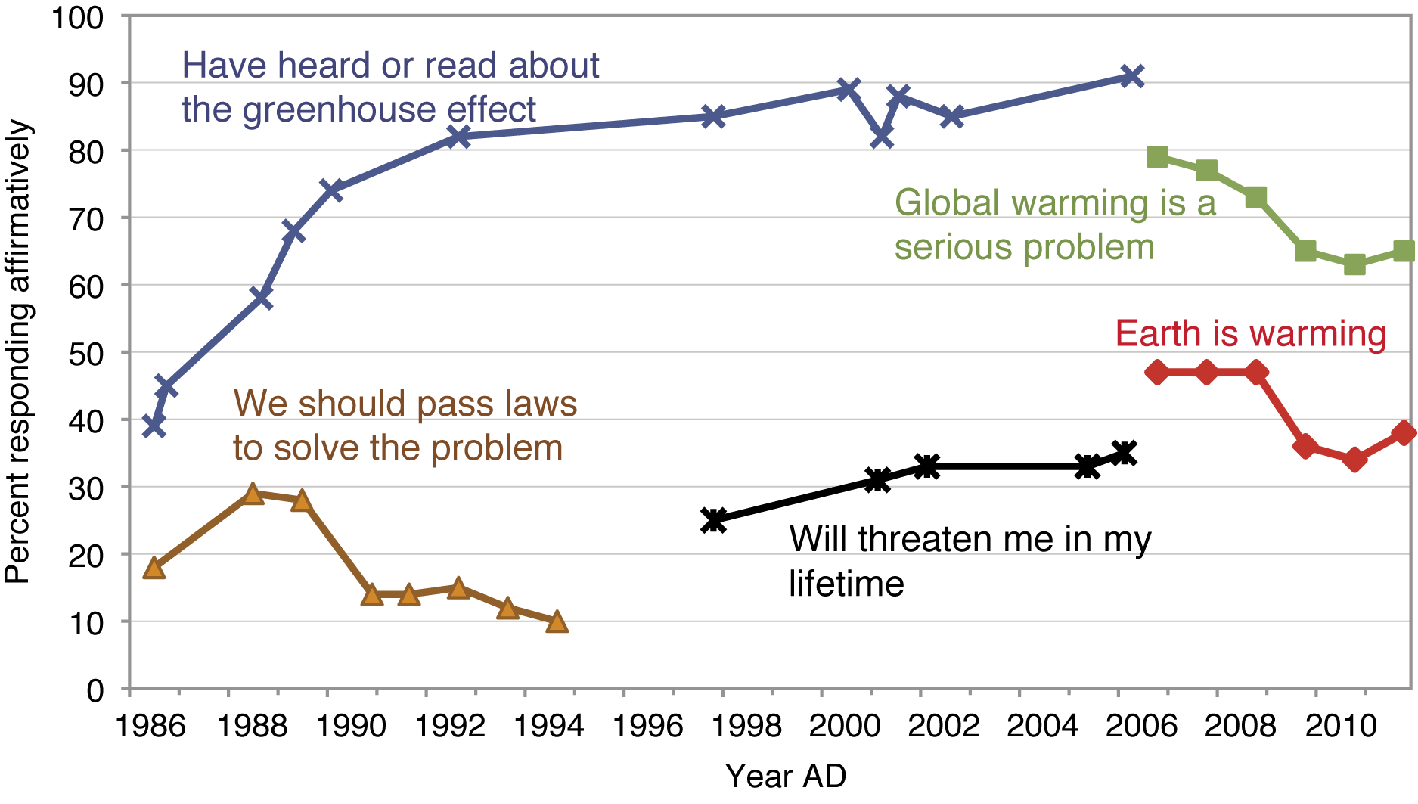- Home
- Publications
- PAGES Magazine
- Abrupt Changes - To What Extent Are Tipping Points a Concern In Coping With Global Change? [Present]
Abrupt changes - To what extent are tipping points a concern in coping with global change? [Present]
Derek Lemoine
PAGES news
20(1)
42
2012
Derek Lemoine
Department of Economics, The University of Arizona, Tucson, USA; dlemoine email.arizona.edu
email.arizona.edu
Tipping points have entered common discourse in a range of applications: the uprisings of the Arab Spring, the narrative of sporting events, the evolution of consumer sectors, the rhythm of political campaigns, the threat of space junk, and the collapse of financial systems. An increasingly frequent application concerns the changing climate (Russill and Nyssa 2009). Some climate tipping points irreversibly change social structures, and the form of this change determines the ultimate effect on climate damages.
Undesirable tipping points involve climate change impacts. First, consider New Orleans or Bangladesh. The infrastructure in these regions are increasingly stressed due to higher sea levels and disappearing wetland buffers. Changing conditions have made them more vulnerable to future storms that could trigger a tipping point for the local culture and economy. Or consider a climate-induced drought that shifts a livestock-based economy to less water-intensive activities. These changes become partially irreversible as economic activity, infrastructure, and communities reorganize under new constraints.
Second, and perhaps more troublingly, climate change might induce large-scale migrations due to higher sea levels, water stress, crop failures, or extreme weather events (de Sherbinin et al. 2011). Shifting populations have triggered massive changes throughout world history, and future migrating populations could trigger internal or external conflicts and bring new challenges of assimilation and adjustment. For example, climate change could enhance water scarcity in South Asia, and recent conflicts in Darfur and other parts of Africa might have been exacerbated by environmental problems.
Other societal tipping points are desirable. First, a breakthrough in low-carbon technology might be necessary to change the dynamics of the energy system (Hoffert et al. 2002). If solar cells or batteries become cheap enough, electrical and transportation systems could begin shifting to less carbon-intensive structures even without a direct policy spur. Second, enacting a greenhouse gas emission policy should create constituencies for further policy. Ambitious policies currently lack clearly defined winners to lobby for their enactment, but moderate policies could develop this constituency by coining valuable property rights in tradable permits or by nurturing low-carbon industries. Third, on the international level, a climate coalition that includes enough countries might be able to raise remaining countries’ cost of holding out (Barrett 2003).
 |
|
Figure 1: The response of the U.S. public to surveys’ questions about global climate change (Pew Research Center for the People & the Press; Nisbet and Myers 2007). |
Finally, we may still reach a further tipping point in climate awareness (see figure 1). Drawing on examples ranging from the diffusion of rumors to trends in smoking, some argue that social networks allow beliefs and behaviors to spread quickly once they reach a critical mass (Gladwell 2000). Incurring undesirable tipping points could raise public concern about the climate to such a threshold. Similar to how the first exposure to the horror of nuclear weapons has so far kept the world from further nuclear warfare, reaching the first undesirable climate tipping point may end up making future tipping points less likely by spurring preventive action.
From economic analysis of tipping points in the physical climate system, we have shown that the best policy response to a tipping possibility depends on two questions: (1) Can we affect whether a tipping point occurs? (2) If we knew a tipping point were about to occur, would we want to pursue a different policy? The first question captures our ability to prevent or spur a tipping point, while the second captures our desire to hedge against the possibility that it occurs. Because the undesirable tipping points depend on our present and future emission decisions, they provide additional incentive to reduce emissions. These undesirable tipping points also increase the payoffs to adaptation policies that reduce society’s exposure to a changing climate. In contrast, desirable tipping points favor policies that make them more likely: funding research into low-carbon technology, pricing carbon sooner rather than later, and building climate awareness. If these desirable tipping points end up spurring significant emission reductions, they might even hold the key to avoiding undesirable ones.
selected references
Full reference list online under: http://pastglobalchanges.org/products/newsletters/ref2012_1.pdf
Barrett S (2003) Environment and Statecraft: The strategy of environmental treaty-making, Oxford University Press, 437 pp
de Sherbinin A et al. (2011) Science 334(6055): 456-457
Gladwell M (2000) The tipping point: How little things can make a big difference, Little Brown, 288 pp
Hoffert M et al. (2002) Science 298(5595): 981-987
Russill C and Nyssa Z (2009) Global Environmental Change 19(3): 336-344